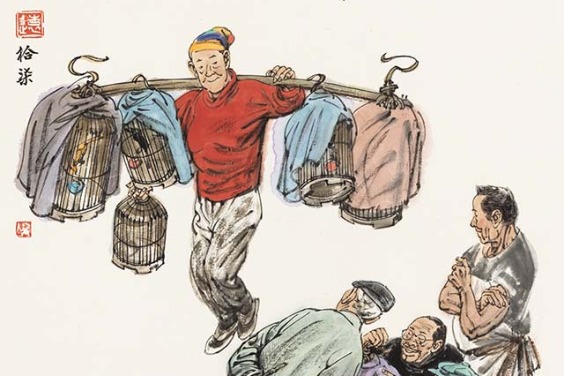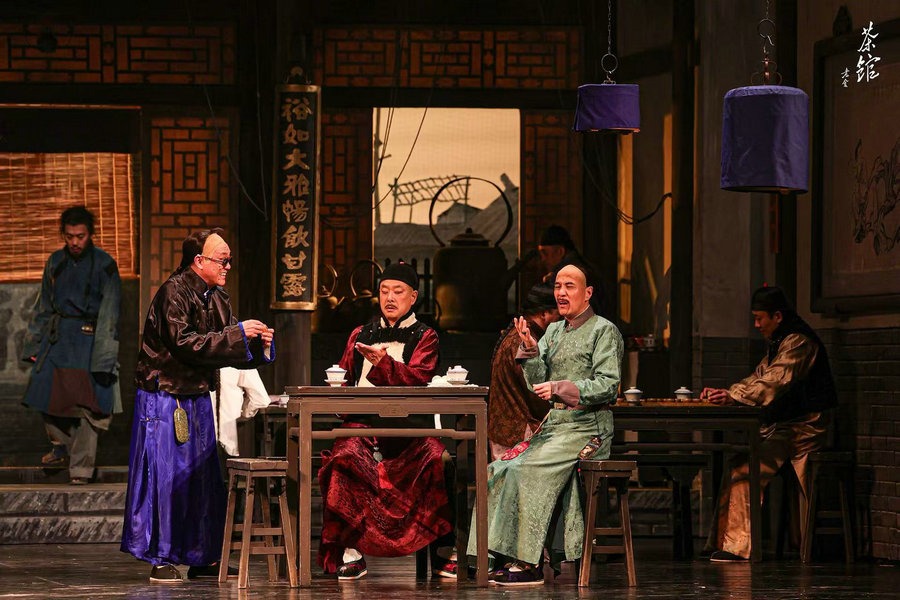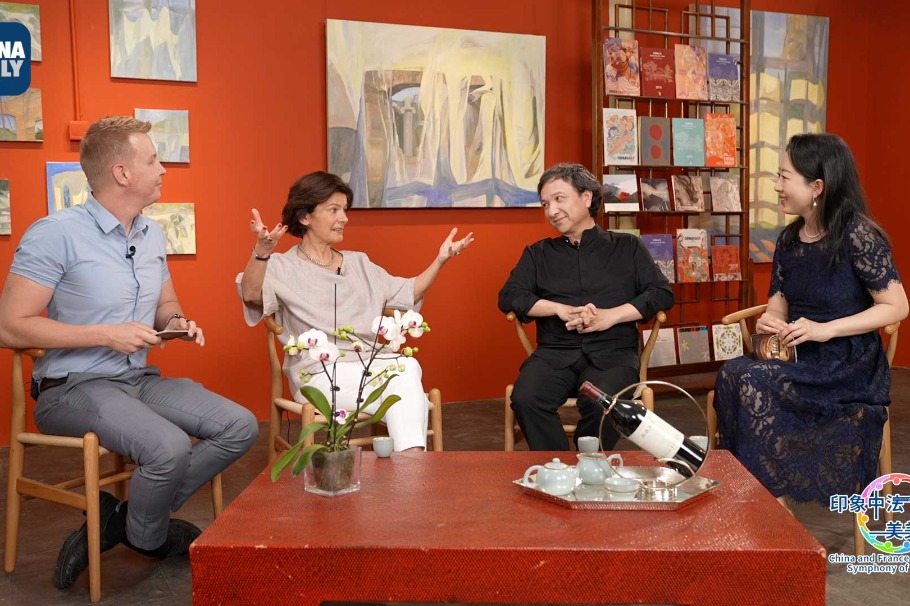Timeless ethnic ideas feed fashion needs today
Designer puts spotlight on cultural gems from past, Zheng Wanyin reports in Dusseldorf, Germany.

First attempt
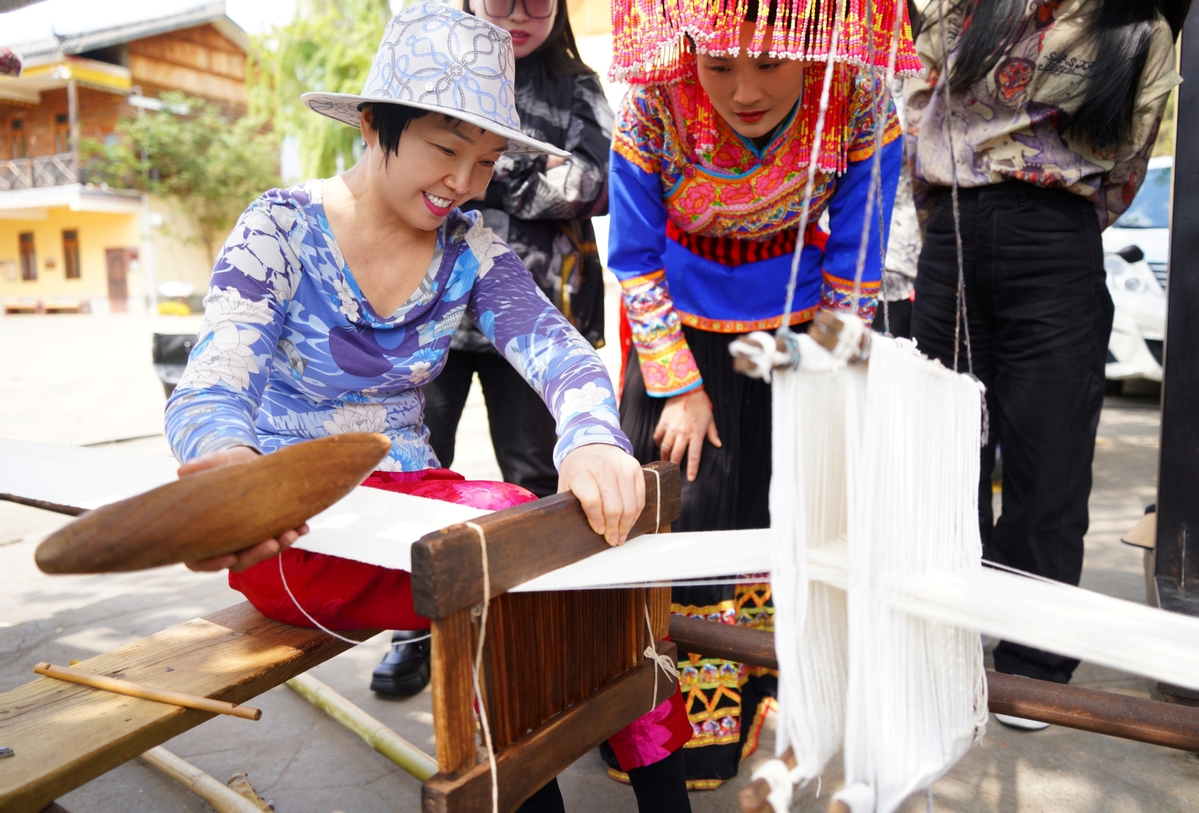
Yet, thinking big also means making extra effort and, every year, Liu will spend two-thirds of her time in China, setting foot in some of the most far-flung corners of the country, she said.
Liu recalled the very first attempt to showcase the Lhoba people from the Xizang autonomous region, which is often dubbed "the tribe of mystery", given that very few people knew much about them in the recent past. The Lhoba is one of the smallest among the 56 ethnic groups in China in terms of population.
The field trip left her with mixed feelings: although she found the Lhoba's weaving distinctively beautiful, it did not quite align with the typical materials used in shoemaking, such as sheepskin or cowhide.
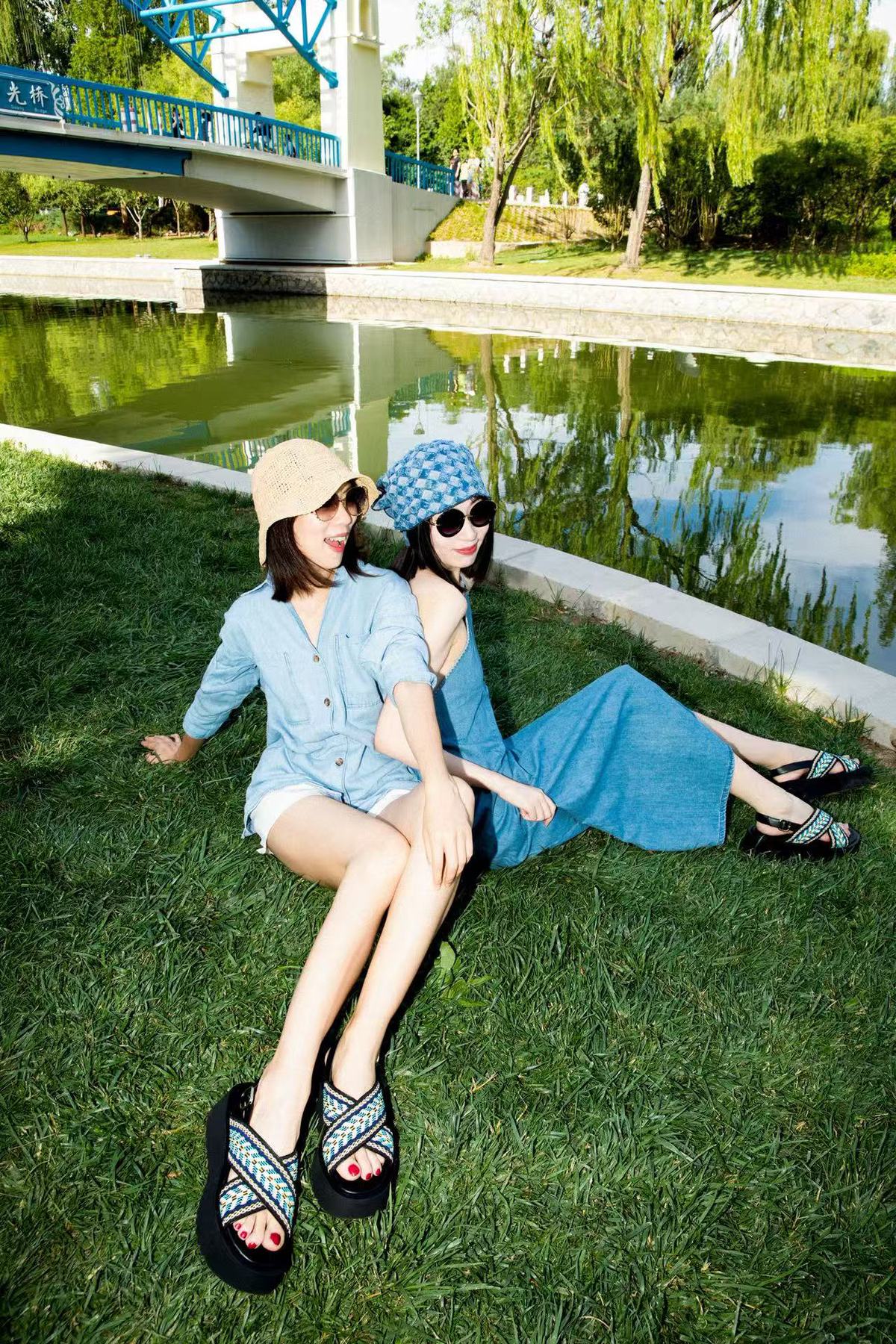
What she eventually gravitated to was the design of a "fussbett" sandal that featured Lhoba weaving crafted into its crisscross satin straps. The design, which she first produced four years ago, is still going strong, and the team updates it each season with new, on-trend colors that give it fresh life and continued relevance, Liu said.
"It helped us realize that traditional craftsmanship, ethnic legends, or local lifestyles can be the soul of one design, but the point here is really about how to reinterpret classics in a modern way, and present these elements to the global market," she said.
For Liu, China's time-honored cultural legacy can exist at a masterful level, be exhibited in museums, refined and elevated, but it can also become part of daily life, blending with the latest trends and existing as wearable, living art.
Andrea Greuner, interim manager of Fashion Net Dusseldorf e.V., a local fashion association that organizes and coordinates DFD, said Sheme's shoes are "unique" in their Chinese heritage, yet also "international".
"That is what we really need. We want to show that we are an international marketplace, but beyond presenting those already well-known brands," Greuner said.
Liu noted that she is by no means the only person offering a spin on her cultural identity, and that an increasingly expanding community of home-grown designers seeking to go global by looking inwards is palpable.
And it is not only happening in fashion. Chinese companies with cutting-edge technology and cultural exports, from BYD and DJI to DeepSeek and Labubu, are now global household names.
Liu has witnessed the decades-long, winding evolution of China's manufacturing industry. Back in the early 1990s, when she visited a footwear trade show in Europe, an exhibitor ushered her out of a booth, saying people with yellow skin were only there to steal designs, and that there was no way she could afford to spend hundreds of euros on shoes. She walked away, holding back tears, but the episode triggered a quiet resolve.
Twenty-nine years seem to have gone by in the blink of an eye since Liu founded her company in 1996. Back then, she had a small workshop and only 20 workers producing shoes for other labels. Today, she owns a Chinese brand that is proudly original and finely handcrafted, and some of the luxury items sell for more than 3,000 euros ($3,523).
The tomorrow she envisions remains promising.
"Original design with soul. Every-day products with real value. When something is truly beautiful, well-crafted, and unique, it knows no borders," she said.
Contact the writer at zhengwanyin@mail.chinadailyuk.com



















